Updated Emergency Numbers:
Take note of these emergency numbers.
Rescue 5: 922-5155
National Disaster and Risk Reduction Management Council (NDRRMC): 911 1406, 912-2665, 912-5668
Philippine Atmospheric, Geophysical, and Astronomical Services Administration (Pagasa): 433-8526.
Department of Transportation and Communications (DOTC): 7890, 0918-8848484
Metro Manila Development Authority (MMDA): 136
Department of Public Works and Highways (DPWH): 304-3713
Philippine National Police (PNP): 117, Txt 2920
Bureau of Fire Protection (BFP): 729-5166, 410-6254, 431-8859, 407-1230
Red Cross: 143
Meralco: 16211
North Luzon Expressway (NLEX): 3-5000, 580-8910
Subic-Clark-Tarlac Expressway (SCTEX): 0920-967-2839
Skyway: 776-7777, 0915-6256231, 0939-5006910
South Luzon Expressway (SLEX): 0908-8807539
For Antipolo residents: 696-9911
For Caloocan residents: 288-8811 local 2295.
For Las Piñas residents: 364-5752
For Makati residents: 168 / 899-8928 / 896-2828 / 895-8243
For Malabon residents: 281-4999
For Mandaluyong residents: 531-0182
For Manila residents: 136 / 882-4151 / 527-3087 / 527-0451
For Marikina residents: 161 / 646-2436 / 646-2423
For Muntinlupa residents: 862-2525 / 862-2664
For Navotas residents: (02) 281-1111
For Parañaque Rescue hotline: 923-2499
For Pasay City residents: 833-8512 / 551-7777
For Pasig and Pateros residents: 641-6373 / 643-0000 / 631-0099
For Quezon City residents: 928-4396 / 927-5914 / 924-2027
For San Juan residents: 468-1697 / 722-9952
For Taguig residents: 994-7538 / 623-5244
For Valenzuela City residents: 292-1405
For Naia flight info nd other inquiries: TERMINAL 1-8710804, 8719712; T2- 7827918, 7827921; T3- 4252297, 8777888; Mla Domstc 4252293.
35 minutes ago near Makati ·
-
What to do before, during and after a flood/ What to put in an emergency relief boxIn the wake of Typhoon Ondoy, Rotary International District 3830 put together a Disaster Management Manual for all Philippine Rotary Clubs. The manual, created by the District Disaster Management Committee, included lots of pertinent information about the kinds of natural and man made disasters that we may find ourselves in and mapped out appropriate responses.In light of the torrential rains we have suffered in the past week, we quote below some of the safety tips during typhoons and flashfloods that were mentioned in the manual.Before the flood:1. If you live in an area prone to flooding, stockpile emergency building materials including plywood, plastic sheeting, lumber nails, hammer and saw, pry bar, shovels and sandbags.
2. Construct barriers to stop floodwater from entering your home.
3. Have an evacuation plan or route and two or three other contingency plans in case the first route is not passable. Find out what the community’s evacation plan is from the local emergency management agency.
4. Have flashlights and extra batteries, portable battery operated radios, a first aid kit, emergency food and water, a non-electric can opener, essential medicines, cash and credit cards and sturdy shoes on stand byWhen a flood is imminent
1. pack a bag with the most essential items, including your medications
2. When advised to evacuate your home, do so immediately and move immediately to higher ground
3. turn off utilities at the main switches or valves and disconnect appliances
4. Fill bathtubs, sinks and pails with clean water in case water becomes contaminatedDuring a flood:
1. Do not walk through moving water. As little as six inches of moving water can make you fall.
2. If you have to walk, use a stick to test the firmness of the ground in front of you.
3. Do not drive through floods. If floodwaters rise around your car, abandon the car and move to higher ground if you can do so safely.
4. Do not touch electrical equipment if you are wet or standing in water.After a flood:
1. Listen to news reports to hear whether your community’s water is safe to drink.
2. Avoid flood water which could be contaminated or electrically charged. Clean and disinfect everything that got wet with floodwater or mud.
3. Stay away from downed power lines.
4. Service damaged septic tanks, cesspools, pits and leaching systems ASAP as these are serious health hazards.In a separate box:
Knowing what to donate to relief centers is not an exact science. We give whatever is convenient or accessible but this may not always be appropriate to the needs of a particular community. RI District 3830 has designed a Disaster Relief Emergency Box that meets the needs of a wide range of calamities.
Should you want to reproduce this, these are the items found in the box.1 25kg sack of rice
50 pcs of canned sardines
50 pcs instant noodles
25 pcs 50g coffee
25 pcs 500g sugar
25 pcs 90g creamer
25 pcs plastic bagspain reliever such as alaxan/asprin/anti diarrea/band aid
tooth paste/toothbrush/soap
2flashlights with extra batteries
[email_link]

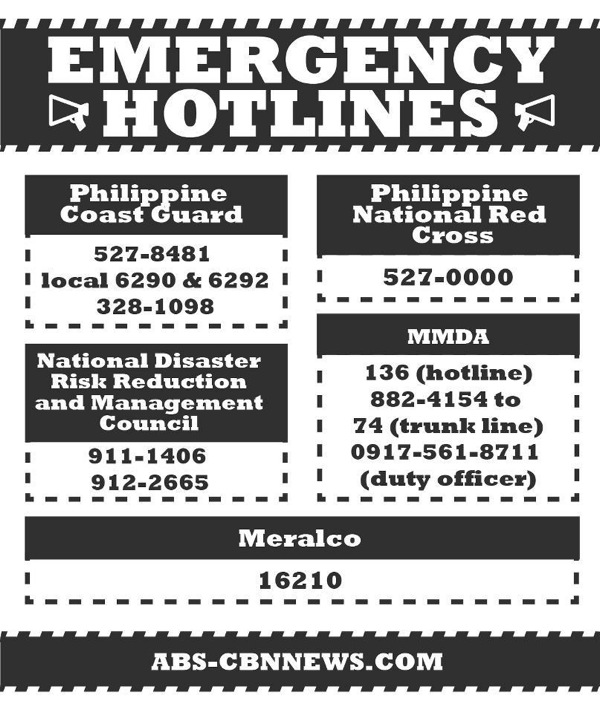
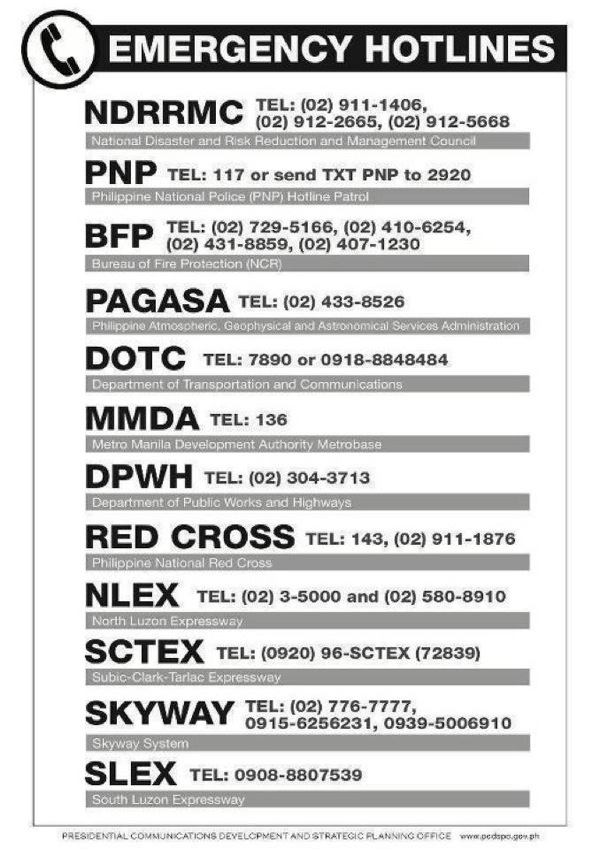

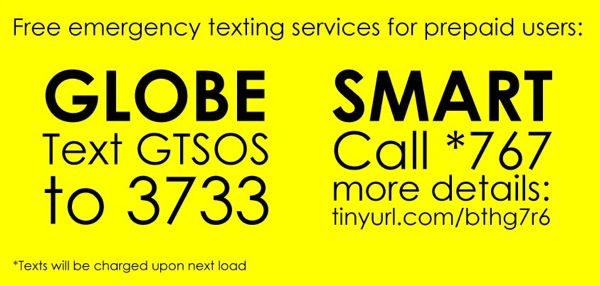
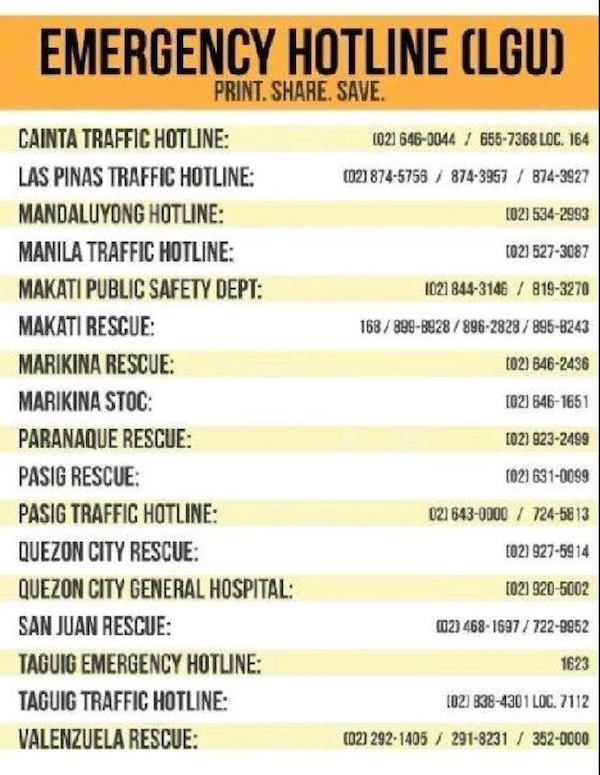
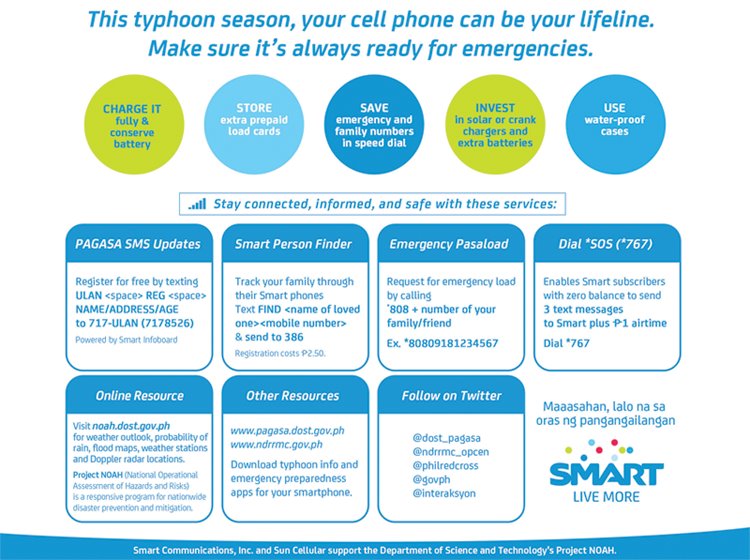
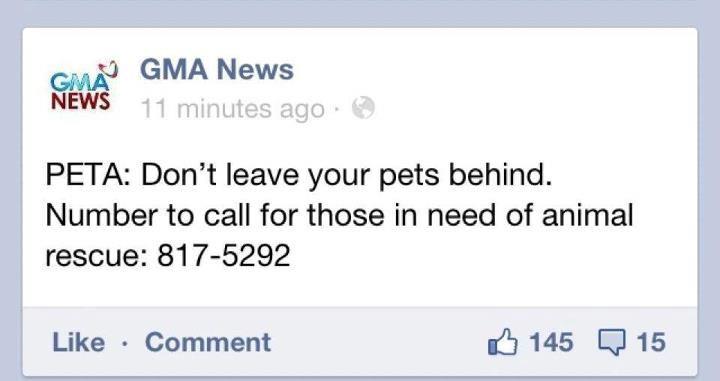
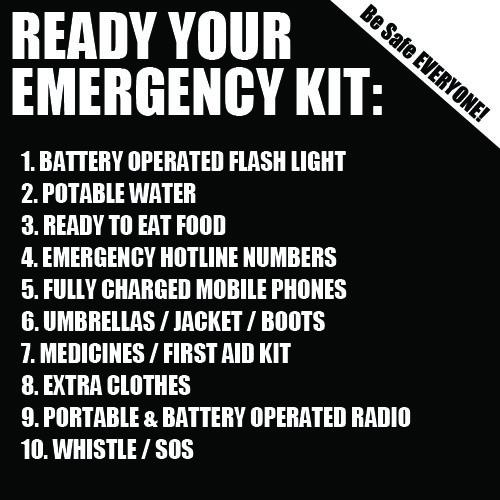
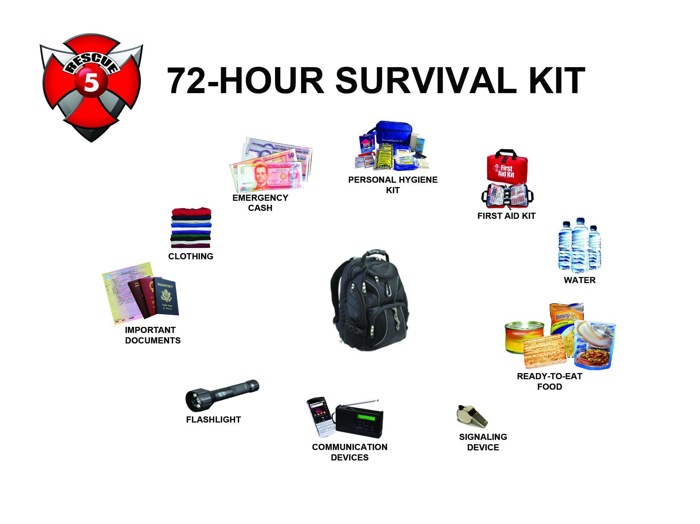
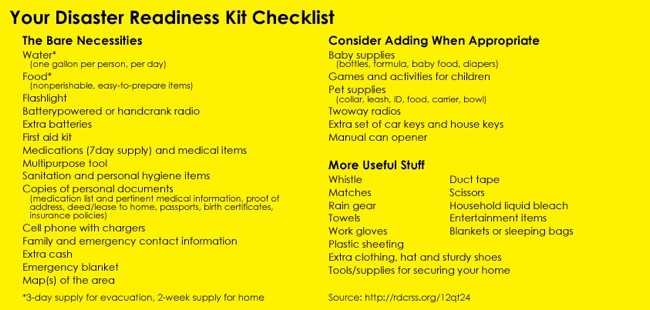



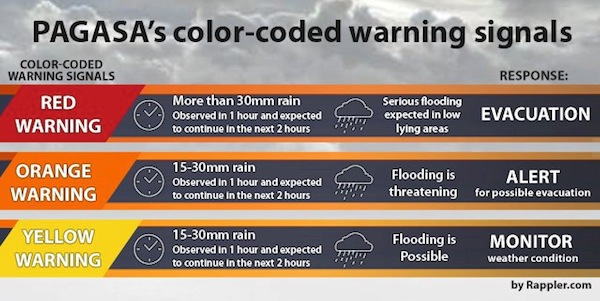











[…] Previous entry: In Case of Emergency August 7, 2012 […]